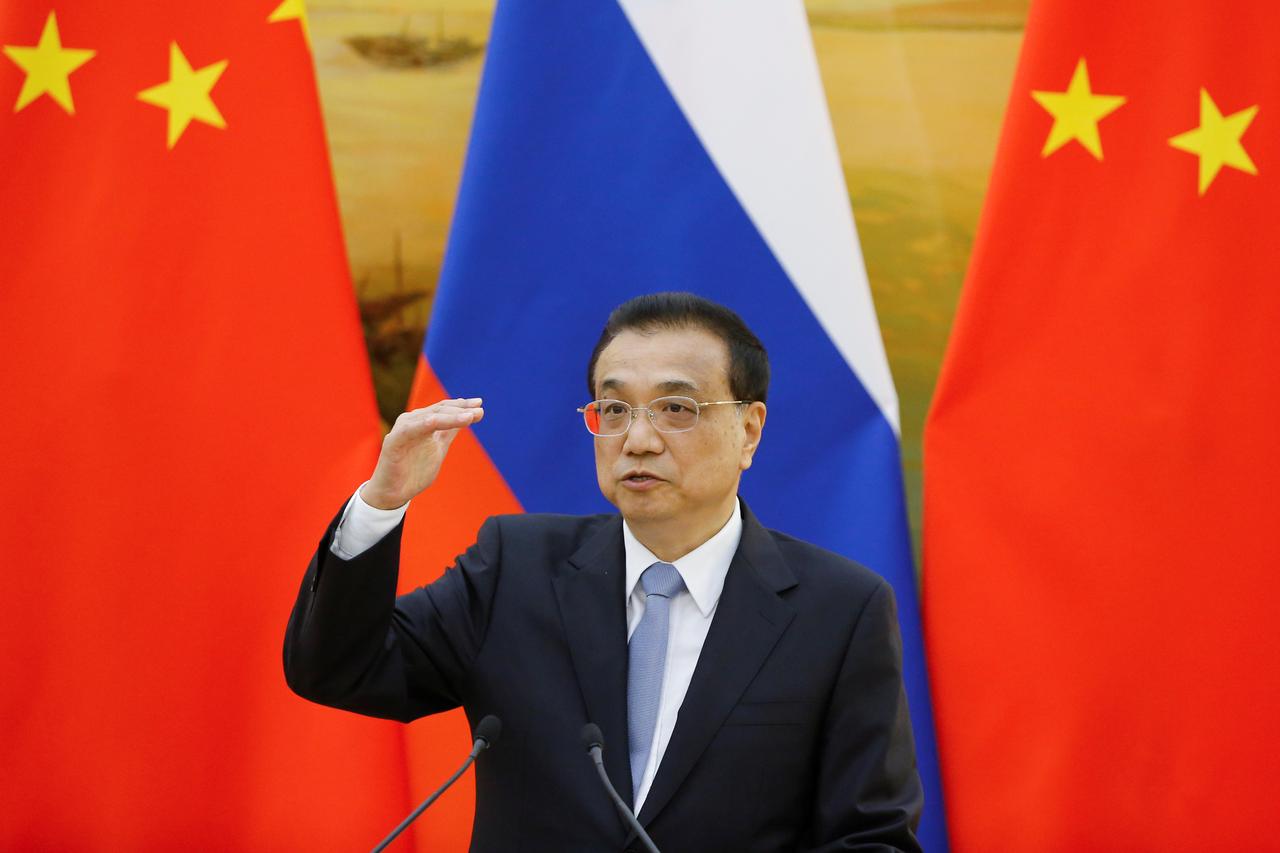
OR
China to slash taxes, boost lending to prop up slowing economy
Published On: March 5, 2019 01:28 PM NPT By: Reuters

BEIJING, March 5: China sought to shore up its slowing economy through billions of dollars in planned tax cuts and infrastructure spending, with economic growth at its weakest in almost 30 years due to weaker domestic demand and a trade war with the United States.
The government is targeting economic growth of 6.0 to 6.5 percent in 2019, Premier Li Keqiang said at Tuesday’s opening of the annual meeting of China’s parliament, less than the 6.6 percent gross domestic product growth reported last year.
Sources told Reuters earlier this year that China would cut its 2019 growth target to 6.0 to 6.5 percent from the 2018 target of around 6.5 percent as both global and domestic demand ebbed and the U.S. trade war heightened economic risks.
Speaking in Beijing’s Great Hall of the People, Li warned of the challenges the world’s second-largest economy faced and pledged to keep it on a safe footing with an array of stimulus measures.
“The environment facing China’s development this year is more complicated and more severe,” he said. “There will be more risks and challenges that are either predictable or unpredictable and we must be fully prepared for a tough battle.”
Li said China’s fiscal policy would become “more forceful”, with planned cuts of nearly 2 trillion yuan ($298.31 billion) in taxes and fees for companies.
Those tax cuts are more aggressive than the 1.3 trillion yuan delivered in 2018 and include reductions aimed at supporting the manufacturing, transport and construction sectors.
China’s GDP last year expanded at its slowest pace since 1990 due to the trade war and Beijing’s crackdown on financial risks, which raised corporate borrowing costs and hurt investment.
Analysts say Beijing’s move to adopt a GDP target range, rather than a single growth figure, gives policymakers room to maneuver. But the increase in planned fiscal stimulus marks an explicit acknowledgement that authorities remain concerned about growth.
“If you are not sick you will not take so many medicines at one time,” said Iris Pang, Greater China Economist at ING Wholesale Banking. “It means the headwinds have not gone away, they are still there.”
A longer-term campaign to curb polluting and low-value industries also slowed China’s vast manufacturing sector.
China has ramped up the propaganda in the run-up to parliament, with state media releasing English-language videos and even a rap song praising the event as an exercise in Chinese democracy, though the legislature never rejects laws and its members are chosen for their loyalty to the Communist Party.
The annual gathering in the capital includes more than 3,000 delegates, who come from all over China, with ethnic minorities showing up in colorful traditional outfits.
To support growth, Li said China would closely monitor employment at exporting companies heavily exposed to the U.S. market and cut the value-added tax (VAT) for the manufacturing sector to 13 percent from 16 percent. VAT for the transport and construction sectors will be cut to 9 percent from 10 percent.
China aims to create more than 11 million new urban jobs this year and keep the urban unemployment rate within 4.5 percent, in line with its 2018 goals. At the same time, it will cut the social security fees paid by companies.
DEEPER TAX CUTS, SUPPORT TO SMES
In a push to ramp up infrastructure investment, China’s finance ministry raised the special bond issuance quota for local governments to 2.15 trillion yuan ($320.79 billion) from 1.35 trillion yuan last year.
The lower tax revenue and higher government spending push China’s budget deficit target for this year up to 2.8 percent of GDP from last year’s 2.6 percent.
TRADE RISKS
Addressing one of the biggest challenges China’s economy faces, the government’s work report to parliament said it would continue to promote Sino-U.S. trade negotiations and was committed to safeguarding economic globalization and free trade.
Separately, China’s top banking regulator said on Tuesday Beijing could “absolutely” reach an agreement with the United States on opening up its financial sector, even as the country’s commerce minister admitted talks with Washington had been difficult.
In recent weeks, the United States and China appear to have moved closer to a trade deal that would roll back U.S. tariffs on at least $200 billion worth of Chinese goods.
U.S. Secretary of State Mike Pompeo said on Monday he thought both nations were “on the cusp” of a deal to end their trade war.
You May Like This

NRA seeks information on 6 Chinese firms from Chinese Embassy
KATHMANDU, July 22: National Reconstruction Authority (NRA) has sought information about six Chinese firms that have partnered with Nepali civil contractors... Read More...

Chinese embassy hosts cultural program to mark Chinese Tibetan Lhosar
KATHMANDU, Feb 16: The Embassy of China organized a cultural program in the capital on Thursday to celebrate the Year of... Read More...

Nepal can benefit from Chinese economic progress: Chinese Minister Zhang
KATHMANDU, Oct 19: Minister for Industry, Nabindra Raj Joshi, and Chinese Minister of State Administration for Industry and Commerce, Zhang... Read More...

Just In
- Indians vote in the first phase of the world’s largest election as Modi seeks a third term
- Kushal Dixit selected for London Marathon
- Nepal faces Hong Kong today for ACC Emerging Teams Asia Cup
- 286 new industries registered in Nepal in first nine months of current FY, attracting Rs 165 billion investment
- UML's National Convention Representatives Council meeting today
- Gandaki Province CM assigns ministerial portfolios to Hari Bahadur Chuman and Deepak Manange
- 352 climbers obtain permits to ascend Mount Everest this season
- 16 candidates shortlisted for CEO position at Nepal Tourism Board







_20220508065243.jpg)










Leave A Comment